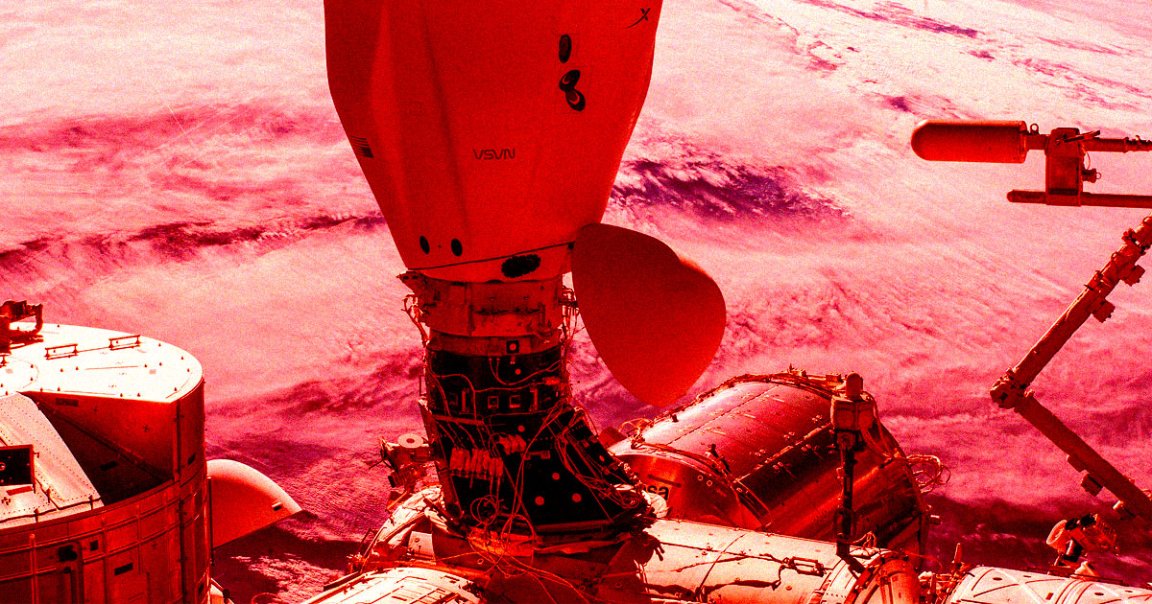
Big Push
SpaceX is planning to fire the engines of its Dragon cargo spacecraft this week, which is currently docked to the International Space Station, to practice for the eventual retirement of the orbital lab roughly six years from now.
As Space.com reports, it’s the first time a SpaceX capsule has fired its thrusters while actively docked to “reboost” the ISS, or keeping it in a stable orbit, a task that historically has been taken care of by Russia’s Soyuz spacecraft.
In addition to keeping the space station at the correct altitude, SpaceX and NASA are using the opportunity to collect data for their joint plans to destroy the ISS.
NASA contracted the Elon Musk-led space company in June to develop a “US Doerbit Vehicle,” as part of an effort to destroy the ISS no sooner than 2030. Broadly speaking, the plan is to push it out of orbit, have it reenter the Earth’s atmosphere, and harmlessly plunge into the ocean.
To prepare for the daring stunt, SpaceX is flexing its muscles by taking over the task of “reboosting” the ISS.
“The data that we’re going to collect from this reboost and attitude control demonstration will be very helpful… and this data is going to lead to future capability, mainly the US deorbit vehicle,” SpaceX director of flight reliability Jared Metter told reporters on Monday, as quoted by Space.com.
Dragon Destroyer
SpaceX is planning to use a beefed-up Dragon cargo spacecraft to give the aging orbital lab, a 900,000-pound and 358-foot behemoth, a massive push.
The capsule is expected to feature 46 Drago thrusters, as compared to just 18 for the cargo variant, along with an “enhanced trunk section that will host propellant tanks, engines, avionics, power generation and thermal hardware tailored to complete this mission,” as SpaceX Dragon mission management director Sarah Walker told reporters in July.
For now, SpaceX’s current Dragon cargo capsule is following the footsteps of Northrop Grumman’s Cygnus cargo spacecraft, which was successfully used to “reboost” the ISS back in 2022 as part of a similar test.
The spacecraft has been used to send supplies to the ISS since 2012. Earlier this week, SpaceX completed NASA’s 31st SpaceX resupply mission.
Now that US-Russia relations have hit new lows following the invasion of Ukraine, NASA is clearly looking for alternative ways to keep the space station in orbit.
Russia has vowed to abandon the ISS no sooner than 2028, which could leave the space agency in a difficult position without the Soyuz in the picture.
But thanks to SpaceX’s alternative, the space station’s days aren’t numbered just yet — or at least not before 2030.
More on the ISS: Boeing Reportedly Looking to Sell Off Its Disastrous Starliner Spacecraft